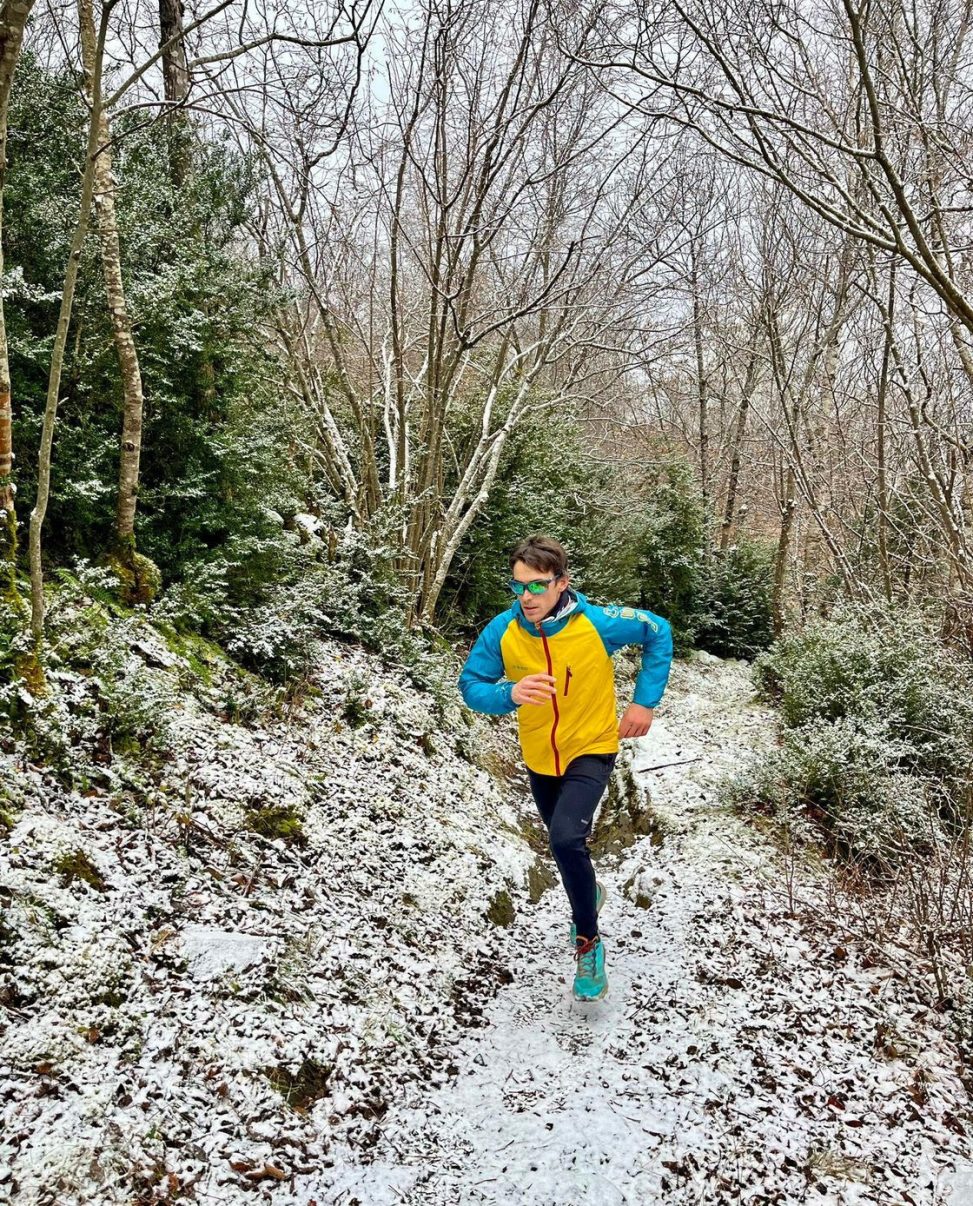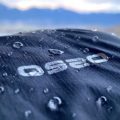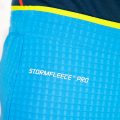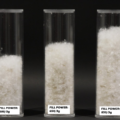By OS2O Design Team,
Using the word «breathable» is common in the vocabulary of technical mountain garments. But, do we really know what it means? The origin of this term answers two questions: the complexity of how fabrics work and marketing.
When we say a fabric is waterproof/breathable, we mean that it prevents liquid water from entering in the form of drops but allows vapor to escape. So, the correct term based on this function would be water-impermeable/vapor-permeable fabric. However, by convention, we simplify it to waterproof/breathable. It’s worth recalling a previous post on waterproofing: «Impermeable Is Nothing« (in Spanish).
Is sweating the same as transpiration?
Practically speaking, no, they are different processes. The origin of «breathable» comes from the translation of «breathable,» which means escaping vapor or air. This confusion hinders the correct understanding of how these technical mountain fabrics work: in the textile industry, the word «breathable» has become linked to sweating, when really this term (whose origin comes from botany and biology) refers to the action of allowing vapor generated by sweating to escape and not strictly to the secretion of sweat.
Do waterproof/breathable fabrics allow the evacuation of (the vapor generated by) sweat?
The technical development of fabrics has not yet achieved this function: no synthetic fabric prevents water entry while allowing the vapor generated by sweat to escape, as these are opposing functionalities: the more you hinder water entry, the more you hinder vapor escape, and vice versa: the more you facilitate vapor evacuation from inside a fabric to the outside, the more you also facilitate water or wind entry.
So what do we get when we buy a product with waterproof/breathable fabric?
Para que un tejido sea impermeable al agua y permeable al aire o al vapor, tiene que albergar en su interior una membrana microporosa. Es en el adjetivo micro donde está la clave: las membranas no son tejidos de trama y urdimbre, son unas películas químicas muy finas perforadas por agujeros microscópicos que impiden la entrada de las gotas de agua, pero permiten el paso al vapor. Los agujeros tienen un tamaño intermedio entre las gotas, más grandes, y las moléculas de vapor, microscópicas.
For a fabric to be water-impermeable and air or vapor-permeable, it must contain a microporous membrane. The key is in the adjective «micro»: membranes are not woven fabrics but very thin chemical films perforated with microscopic holes that prevent water droplets from entering but allow vapor to pass through. The holes are sized between the larger water droplets and the microscopic vapor molecules
These microporous membranes are very delicate: any friction can break them, and exposure to dirt can clog the pores, affecting their functionality.
For this reason, we talk about multi-layer fabrics. By construction, they can be 2, 2.5, or 3 layers where several components are laminated (glued): an outer fabric (exposed to air) that protects the membrane and an inner fabric (in contact with the skin). The composition and construction of each of these two fabrics play a fundamental role in the final performance of the laminated membrane. More information about membrane construction can be found in dismantling a waterproof and breathable jacket.
Besides knowing the membrane composition—expanded polytetrafluoroethylene (ePTFE) or polyurethane (PU)—it is necessary to identify the composition of the outer fabric, typically nylon. It is also important to understand that the denier unit associated with this outer fabric measures the linear density of the fiber mass (g/m); thus, indirectly, more deniers imply greater wear resistance but proportionally more total garment weight. This is something we dislike in applying our strict FAST&LIGHT philosophy, so as the OS2O design team, we always seek an optimal balance between strength and lightness. Additionally, the composition of the inner fabric in contact with the skin also affects how pleasant the garment feels to wear.
When acquiring a product made with water-impermeable and vapor-permeable fabric, we get protection against rain, snow, and wind, along with a thermoregulatory function. Using these garments allows the body to maintain thermal balance against sources that cause heat loss or overheating due to high-intensity activity: when moving, heat is produced; the more intense the effort, the more work is generated, resulting in excess heat accumulated in the jacket. A water-impermeable and vapor-permeable garment allows this excess heat to be released, maintaining an optimal balance. If the external conditions are cold and we don’t want the heat generated by our body to escape, we should use a thermal insulating garment (with down or fiber filling) to prevent heat loss.
The human body at rest can release up to 60 milliliters of water vapor. During high-intensity activities, this amount increases significantly. Body heat causes this warm sweat (>37ºC) to evaporate, reducing the body’s temperature. In summary: sweating cools the body very efficiently.
What happens when we have a garment between the skin and the outside?
Despite technological advances in fabric development, we have not yet achieved the efficiency of skin. Each garment we wear is an additional layer that vapor must pass through to escape outside. The evaporation process is affected by the garment, and depending on the intensity of exercise and weather conditions, we may have an overheating problem. In some situations, using waterproof/breathable fabric garments can hinder rather than help this balance. Using the right garment at the right time depends on the knowledge and experience of each athlete.
So what does breathability mean?
The functionality of breathable membranes is to allow the hot vapor (produced by the body when sweat evaporates) generated during sports activities to pass through them. Air-permeable fabrics have a high capacity for water vapor transmission.
Here you have the catalog of OS2O waterproof/breathable jackets and pants.
References
Schindler, W.D. (ED.) & Hauser, P.J. (2004). Chemical Finishing of Textiles. Woodhead Publishing Limited.
Shishoo, R. (2005). Textiles in Sport. Woodhead Publishing Limited.
Watkins, S.M. & Dunne, L.E (2015). Functional Clothing Design. Fairchild Books.






Deja una respuesta